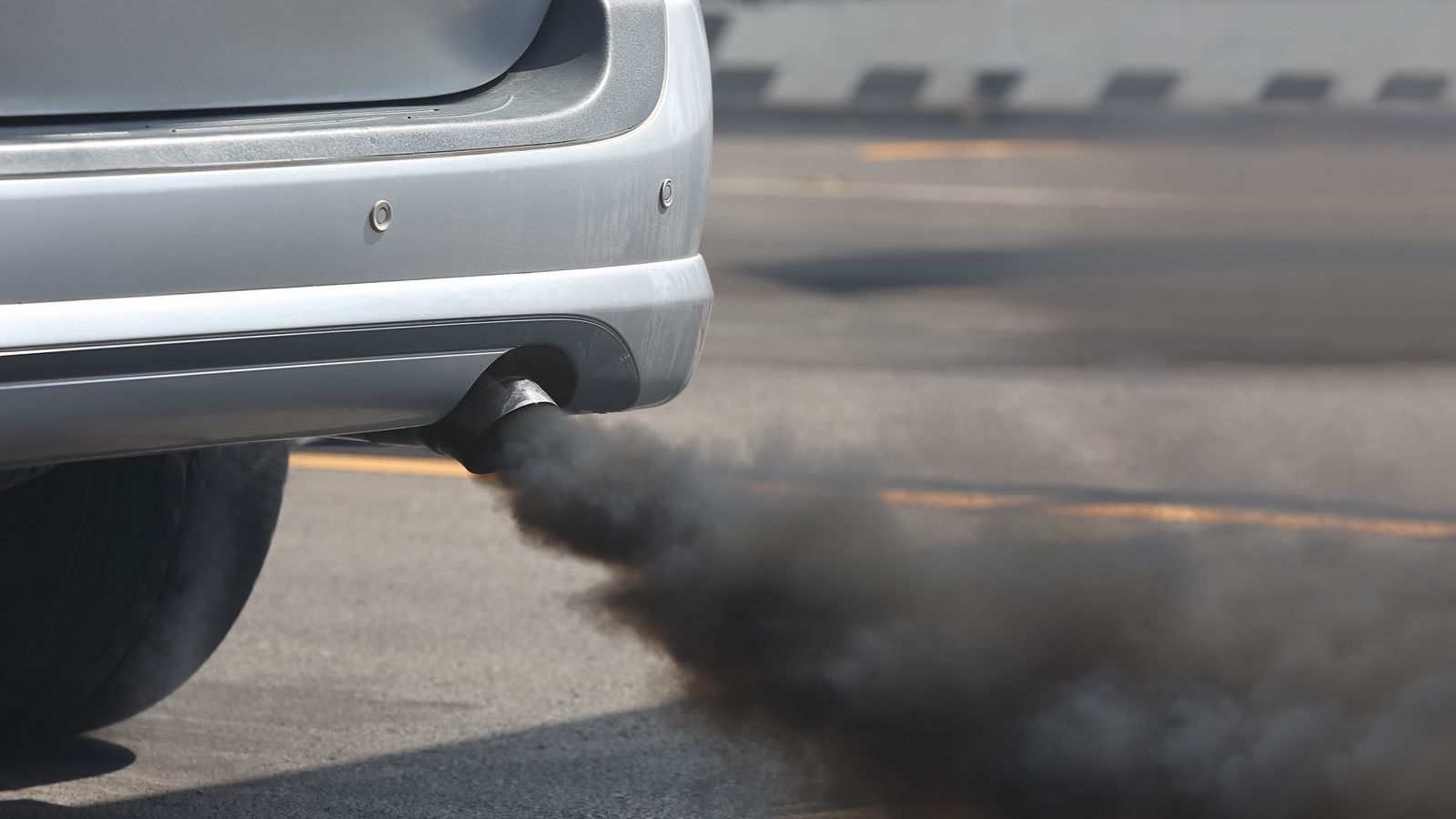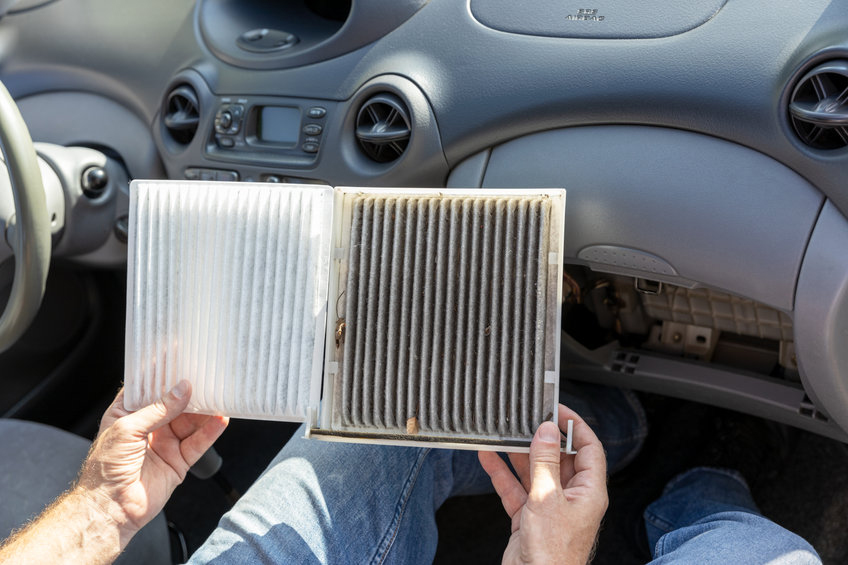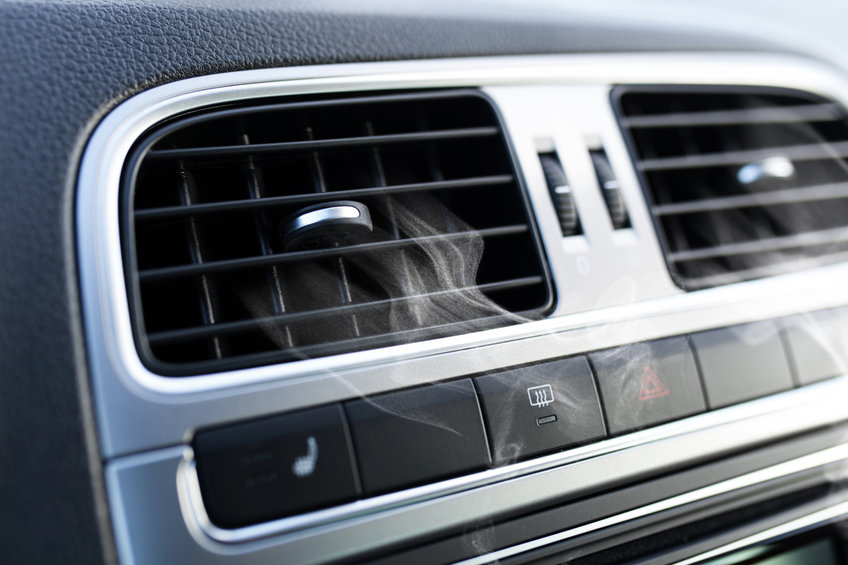Did you know that cars and trucks once had separate air intakes that allowed air from the outside to enter the passenger compartment? Those were those handles that said “Vent”. Those vent handles allowed fresh air to pass from the front of the vehicle directly to the passenger compartment. That was when air conditioning was an option and not the norm.
 Now because of the air conditioning systems and the sophistication of these systems, all the air that comes into your vehicle comes through the same route. Over the engine, into the fresh air ducts, into the evaporator case, around the evaporator core and heater core, through the blower fan housing, and then finally into the passenger compartment where you are.
Now because of the air conditioning systems and the sophistication of these systems, all the air that comes into your vehicle comes through the same route. Over the engine, into the fresh air ducts, into the evaporator case, around the evaporator core and heater core, through the blower fan housing, and then finally into the passenger compartment where you are.
Because we live in southwest Florida I challenge you to see just how many vehicles have their windows open on the road at any given time. So the long and short of it means that as you are driving on the road behind a diesel, or a poorly maintained vehicle that is smoking or running too rich, or in a dusty condition all of those contaminants and debris are coming into your vehicle and into your lungs.
 Why are we not aware of this? Because our engineers have put in systems to trap those particles so that we are not endangered. Every breath of air that runs into the new vehicles runs through or over an evaporator core and a cabin filter. The cabin filter is the most overlooked filter in a vehicle and most owners do not even know that they exist. They are usually located under the dash in the evaporator case hidden by glove boxes or lower dash panels. Everyone knows the importance of the air filter for the efficiency of the engine so this is to protect our lungs.
Why are we not aware of this? Because our engineers have put in systems to trap those particles so that we are not endangered. Every breath of air that runs into the new vehicles runs through or over an evaporator core and a cabin filter. The cabin filter is the most overlooked filter in a vehicle and most owners do not even know that they exist. They are usually located under the dash in the evaporator case hidden by glove boxes or lower dash panels. Everyone knows the importance of the air filter for the efficiency of the engine so this is to protect our lungs.
Just as important as changing these cabin filters every 15,000 miles or yearly, you should have the evaporator core cleaned at regular intervals, too. The evaporator core and the heater core both look and act like mini radiators for your automobile. Their sole purpose is to act as a heat exchanger to the hot or cold air that is coming into the passenger compartment. If they are working properly, they both have the opportunity to “sweat” (That’s what that puddle of water is under your vehicle on a humid day). This sweating process turns those cores into magnets that trap dust, organic material, and road debris.
If the cabin filters are too overloaded with debris the filtering process becomes null and void. It then becomes the perfect breeding ground for MOLD. Mold is hazardous to your health, it can make you sick, it can aggravate any breathing disorders that you may be experiencing and it could very well be deadly.
 The solution? Have your service provider check your cabin air filter if you have never had it checked. If you are driving for long periods of time in your vehicle and feel ill or have trouble breathing (or have a strange “gym sock odor”), it may be time to have your evaporator core sanitized. It is after all YOUR health.
The solution? Have your service provider check your cabin air filter if you have never had it checked. If you are driving for long periods of time in your vehicle and feel ill or have trouble breathing (or have a strange “gym sock odor”), it may be time to have your evaporator core sanitized. It is after all YOUR health.
P.S. Here is something no one has ever taught you. The proper way to use your air conditioning. Here is the scenario: Your vehicle is parked outside during the heat of the day and it’s time to go home. Here’s what you should do: